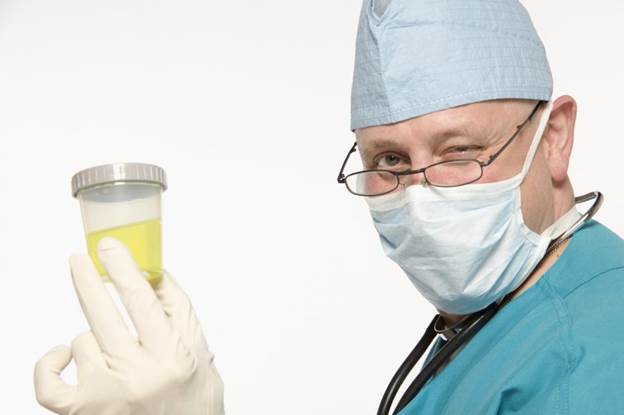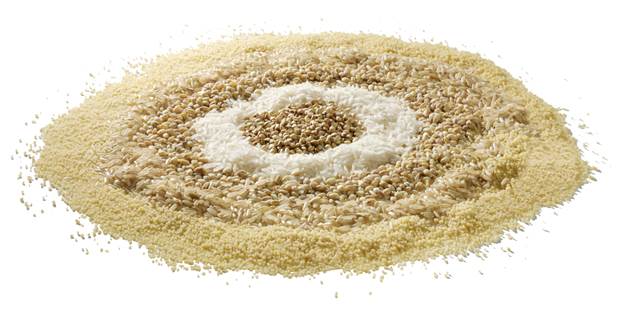If rice truly is an important source of
arsenic exposure, then people who eat rice should have greater arsenic levels
in their body, on average, than people who do not. To find out, we analyzed
data collected annually by the National Center for Health Statistics for the
National health and Nutrition Examination Survey (NHANES). The survey contains
information on the health and nutrition of a nationally representative sample
of the U.S. population, based on interviews and physical exams, which may
include blood and urine tests.

A
urine test is the best measure of recent arsenic exposure because most of it is
excreted in urine within a few days after ingestion
Our data analysis was led by Richard
Stahlhut, M.D., M.P.H., an environmental health researcher at the University of
Rochester, who is experienced in NHANES analysis, and Ana Navas-Acien, M.D.,
Ph.D., a physician-epidemiologist with expertise in arsenic research at Johns
Hopkins University’s Bloomberg School of Public Health. Working with our
statisticians, they reviewed NHANES data from 2003 through 2010 from
participants age 6 or older whose urine was tested for arsenic and who had
reported what they’d had to eat or drink from midnight to midnight they day
before their examination. A urine test is the best measure of recent arsenic
exposure because most of it is excreted in urine within a few days after
ingestion.
Because seafood contains a form of organic
arsenic called arsenobetaine, generally considered nontoxic to humans we then
excluded from our analysis anyone who reported eating seafood during the
24-hour period and those with detectable levels of arsenobertaine in their
urine. The remaining participants therefore were more likely to have had
exposure to inorganic arsenic, which poses the greatest potential health risks.
Our study shows people who eat rice have
higher arsenic levels.
Our resulting analysis of 3,633 study
participants found that on average, people who reported eating one rice food
item had total urinary arsenic levels 44 percent greater than those who had
not, and people who reported consuming two or more rice products had levels 70
percent higher than those who had no rice.

Our study shows people who eat rice have higher
arsenic levels.
“Despite our taking into account other common
sources of arsenic, and no matter which way we sliced the data, we see a very
strong association between rice consumption and arsenic exposure,” says
Stahlhut, who along with Navas-Acien led a similar analysis of NHANES data for
our January 2012 article on arsenic in juice. That analysis found that study
participants who reported drinking apple or grape juice had total urinary
arsenic levels that were on average nearly 20 percent higher than those who
didn’t. Consumers Union, the advocacy arm of us, urged the FDA to set a 3ppb
limit for total arsenic in apple and grape juice.
“These findings show that rice is an
important source of arsenic exposure for the U.S population,” says Navas-Acien.
The associations were even stronger for rice compared with juice and are
consistent with the relatively high levels of arsenic, including inorganic
arsenic, measured in rice sampled, she says. She says the results underscore
the need for monitoring arsenic in food and establishing safety standards. A
new study of NHANES data from Dartmouth researchers also shows that rice
consumption can contribute to increased urinary arsenic levels in children.
What should be done
Consumers Union believes a standard for
arsenic should be set for rice and industry should accelerate efforts to reduce
arsenic levels in rice. They should also develop types of rice that take up
less arsenic, and use rice with the lowest possible arsenic in products for
young children, such as infant rice cereal. Our scientists are also asking
regulators to prohibit agricultural practices that may lead to increase in
arsenic in rice:
·
The EPA should phase out use of pesticides
containing arsenic.
·
The USDA and the EPA should end the use of
arsenic-laden manure as fertilizer.
·
The FDA should ban the deeding of arsenic-containing
drugs and animal byproducts to animals.

The
EPA should phase out use of pesticides containing arsenic.
To find out more about what Consumers Union
is doing on the subject and to get involved, go to ConsumersUnion.org/arsenic.
On the international stage, a group advising the World Health Organization is
meeting in 2014 to consider proposed arsenic standards for rice. Limits of 200
ppb (inorganic) for white rice and 300 ppb (total or inorganic) for brown rice
are under discussion.
After the concerns raised by our juice
story, the FDA says it is confident in the overall safety of apple juice. “FDA
has made significant progress in developing a proposed action level for arsenic
in apple juice and is nearing completion of this work,” the agency says in a
statement.
The FDA also says it is studying arsenic in
rice and rice products to determine the levels and types of arsenic typically
found and to identify ways to reduce it.
“The need for a standard for arsenic in
food is long overdue,” says Trudy Bialic, director of public affairs for PCC
Natural Markets, a Seattle-area chain that is America’s largest food co-op.
“Certainly there are excellent and committed people in FDA’s ranks, but it’s
shameful the agency has not addressed this problem more systematically, leaving
us to figure it out on our own to protect ourselves”
Limit your exposure

To reduce arsenic exposure, consider
limiting rice in your family’s diet to the quantities noted here. Our
scientists based these recommendations on a person eating just one product per
day or per week over a lifetime. If you eat more than one type, your risk would
increase. Vary your diet to include non-rice products. If you exceed these limits
one week, you can cut back the next